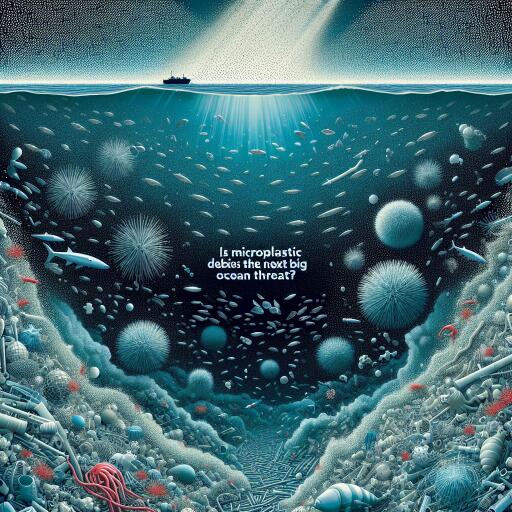
Unveiling the Hidden Hazard: Microplastics in Our Oceans
In the vast expanses of our planet’s oceans, a silent threat lurks beneath the waves, invisible to the naked eye yet potentially catastrophic to marine ecosystems: microplastics. These minuscule particles, measuring less than five millimeters in size, stem from the degradation of larger plastic products, infiltrating the marine environment with alarming ubiquity. This emerging concern has drawn the attention of researchers and environmentalists worldwide, shedding light on an issue that may have profound implications for our seas and their inhabitants.
The genesis of microplastics in the ocean is a reflection of humanity’s enduring reliance on plastic materials, which fragment into smaller pieces over time under environmental stressors such as sunlight and wave action. The omnipresence of microplastics has been confirmed through extensive research, revealing their distribution across beaches, oceans, and marine organisms around the globe. These findings underscore the pervasive influence of human activities on natural ecosystems, marking microplastics as a potent symbol of our environmental footprint.
The Ecological Ramifications of Microplastics
The infiltration of microplastics into marine ecosystems poses various threats to marine life, disrupting natural feeding behaviors and potentially leading to adverse health outcomes. Marine species, mistaking these particles for food, can ingest them, resulting in physical and physiological harm. From blockages in the digestive tracts of small crabs to the starvation of birds filled with plastic yet deprived of nourishment, the impact of microplastics extends across a broad spectrum of marine organisms. The issue is further compounded by the ability of these plastics to adsorb and release harmful chemicals, introducing additional pollutants into the marine food web.
Groundbreaking Research and Urgent Calls for Action
In response to the growing concern over microplastics, research initiatives have intensified, aiming to unravel the complexities of their distribution, behavior in marine environments, and impacts on both marine life and potentially human health. For instance, studies in California have unveiled the widespread consumption of microplastics among various crab species, with some individuals harboring up to 100 plastic fragments. Such insights are critical in gauging the scale of the problem and formulating strategies to mitigate its effects.
Despite these efforts, the call for comprehensive studies and effective intervention strategies remains loud and clear. The need for a deeper understanding of microplastics’ implications is paramount to safeguarding marine and coastal resources for future generations. Prominent environmental groups and research organizations continue to advocate for enhanced awareness and action, emphasizing the role of individual and collective measures in combating this burgeoning threat.
Conclusion
The issue of microplastics in our oceans represents a multifaceted challenge, intertwining ecological, societal, and scientific dimensions. As the body of research grows, so too does the imperative to address this insidious pollutant. While the road ahead may be fraught with obstacles, the concerted efforts of the global community in raising awareness, advancing scientific knowledge, and implementing sustainable practices offer hope. Together, we can confront the challenge of microplastics, striving to protect our cherished marine ecosystems for the well-being of all species, human and non-human alike.
In conclusion, microplastics have emerged as a significant and growing threat to marine environments, underscoring the urgent need for informed action and sustainable solutions. As we continue to peel back the layers of this complex issue, let us remain committed to the preservation and health of our planet’s oceans, a vital component of Earth’s biosphere.





Leave a Reply